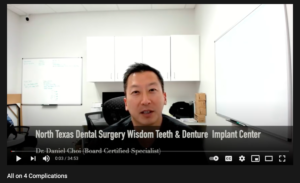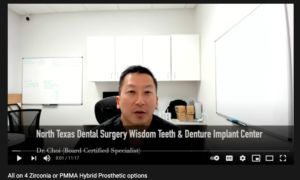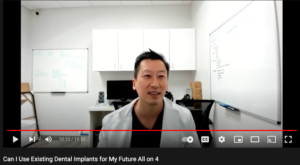Navigating Dental Replacement Choices: From Dentures to Implant Bridges
There are quite a few options that people have when they decide to replace their smiles. This may cause some confusion and some misconceptions about the different treatments.
Deciding Factors:
There are several deciding factors in choosing the right dental treatment, aesthetics, function, bulk of material, cost, smile line, and maintenance periods.
- Aesthetics – How the end product looks in the beginning, how long it will look good, and if there will be wear or staining.
- Functionality – How well the teeth will serve a patient, effectiveness of chewing and comparison to natural teeth.
- Bulk – How bulky the prosthesis is in a patient’s mouth or how much space is taken up.
- Cost – How much is the procedure, maintenance, and future costs.
- Smile line – How much of the teeth does a patient show.
- Maintenance – How often will a patient need maintenance on their dental procedure.
There are two forms of dental treatments, removable and non removable. Removable procedures include complete dentures and implant retained dentures (Snap on Dentures), which tend to be cheaper than other options. Non-removable procedures include All-On-4’s and implant bridges which provide higher quality at greater cost.
There are different materials used in these replacement teeth, Acrylic and Zirconia. Overall, zirconia offers a more permanent solution, as it is less likely to damage compared to acrylic and is more aesthetically pleasing. Acrylic is often used as a temporary prosthesis, since it is more prone to breakage and staining when compared to zirconia. Though acrylic is cheaper, the cost of additional prostheses will likely cost more than a single set of zirconia.
Removable Procedures:
Complete dentures are the baseline option. They generally have good aesthetics and can have variable smile lines, so the size of a person’s smile plays little part in the decision. The cost of complete dentures is usually the lowest of the 4 treatments but in turn, often have lower function and higher bulk. The complete dentures are less secure in the mouth and more prone to falling out unexpectedly and the bulk is also quite high since it is essentially just a large piece of plastic in the mouth. In terms of maintenance, it varies depending on how well the dentures stay in, but could go up to a few years between maintenance periods.
Snap-on dentures use a couple implants in the jaws to have prostheses which are more secure than complete dentures but can still be easily removed by the patient. Snap-on dentures are more reliable with a slightly higher cost compared to complete dentures. They also perform better than traditional dentures in both function and bulk, since they fit more naturally in the mouth and are better secured. For maintenance, the traditional period is 3-6 months between checkups and most often, the nylon inserts in the false teeth need to be replaced, which is done to ensure a secure fit with the implants that are in the mouth.
Non Removable:
The first of the two non removable options is the All-On-4 procedure. This usually has a consistent cost which tends to be more expensive than both complete dentures and snap-on dentures. In return for the higher cost, All-on-4’s provide excellent aesthetics with variable smile lines, along with excellent function and low bulk due to how secure the prosthesis is in the mouth. The bulk exists since the gums and teeth are replaced leaving areas which secure the implants with screws. With maintenance, it is usually anywhere from 6-12 months since the All-On-4 prostheses have prosthetic screws which need to be removed by the dental surgeon, allowing the teeth to come out and be cleaned.
The final procedure type is the implant bridge. The cost of this procedure varies widely, depending on how many replacement teeth are needed. Though a single tooth may cost less than an entire set of snap-on dentures, the cost can quickly add up to be more expensive than the other treatment types. Though there could be a steep cost, this procedure has the best performance out of all treatment types. Since the bridges function exactly the same as teeth, they have excellent aesthetics, function, and no bulk at all. The only drawback is the procedure works best if the patient has a low smile line due to a variability in the bone and gums. When it comes to maintenance, since the implant bridges function exactly as normal teeth do, it all depends on normal factors such as gum health and oral hygiene so the normal period is around 6 months between.
Conclusion:
Overall, the procedure that a patient should get boils down to what suits them best, whether it is a focus on function, aesthetic, or price. However, before deciding on a procedure, a patient should have a consultation with their dentist or surgeon and figure out what is best for them.









